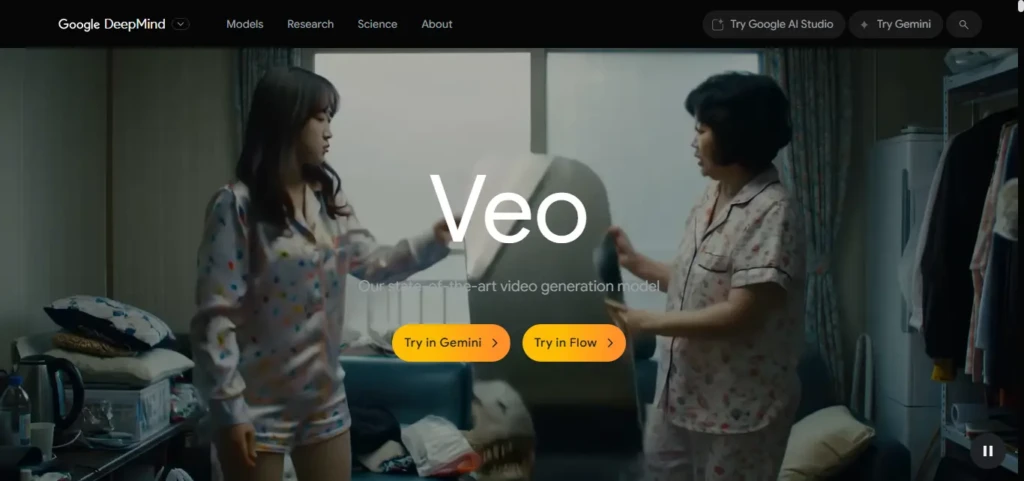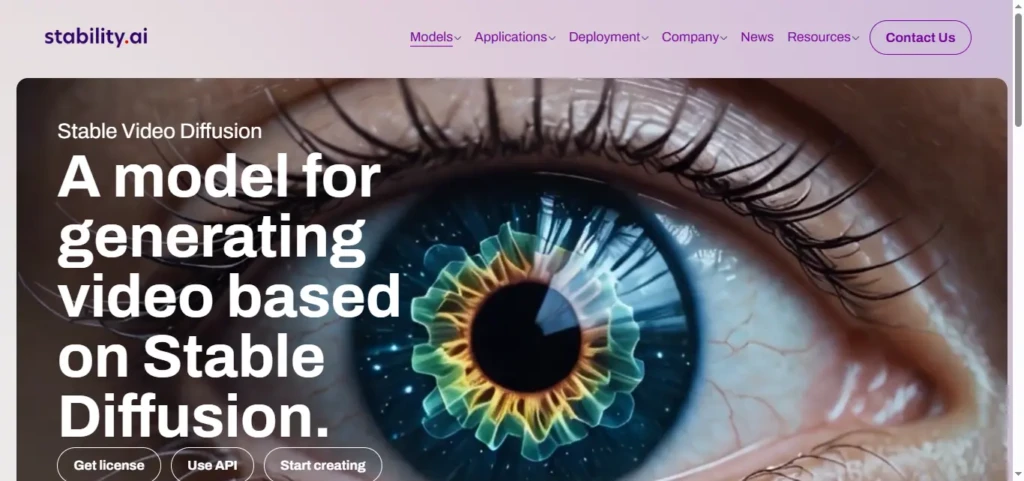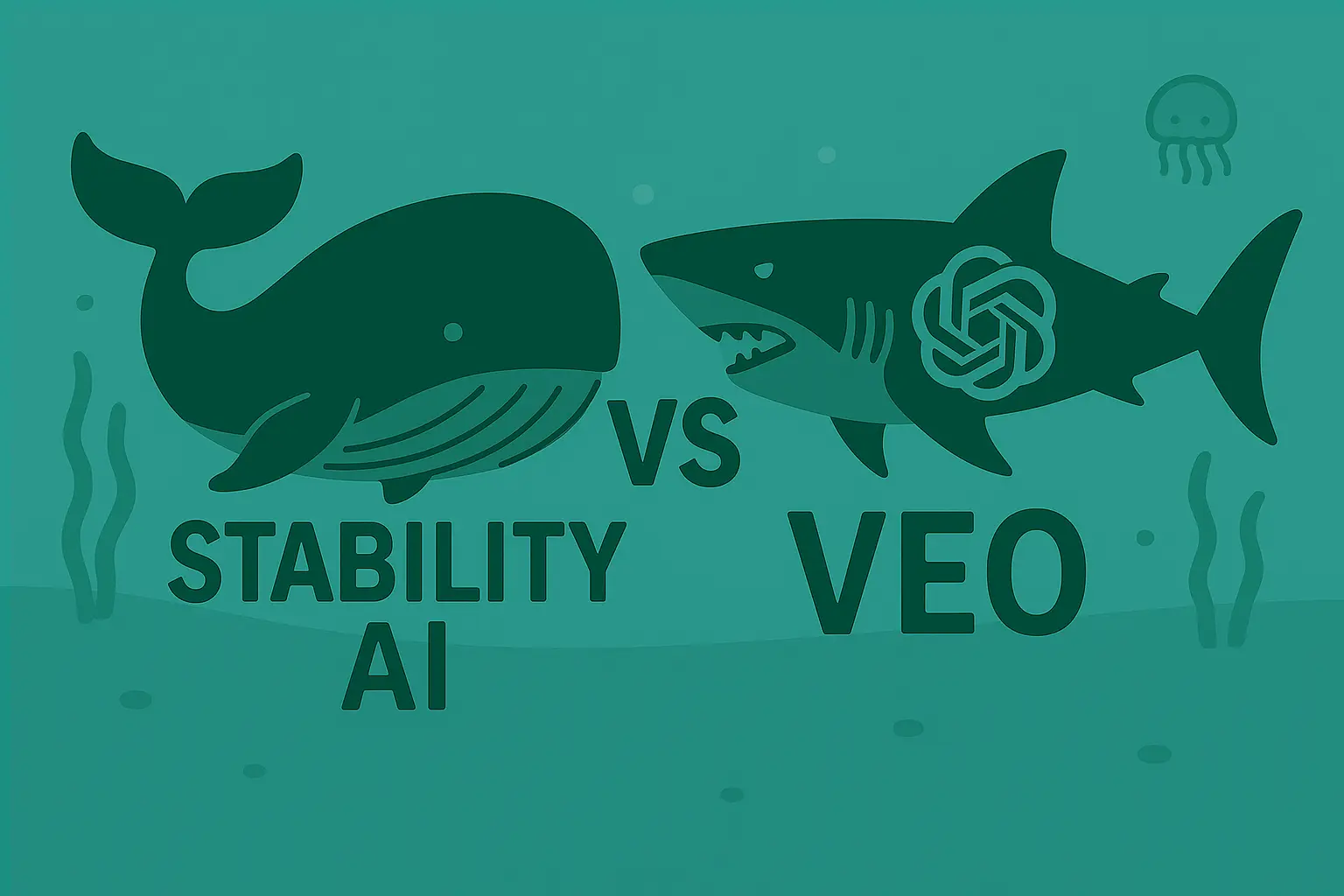Veo 3 vs Stability AI Video: Feature Showdown
Filmmakers today are spoiled for choice—Veo 3 and Stability AI Video both promise powerful text‑to‑video tools.
But which one actually delivers what you need—for realism, control, or audio polish?
Today, we’ll walk through both.
You’ll finish knowing exactly which tool fits your creative workflow.
What Is Veo 3? (Quick Overview)

Veo 3 is Google DeepMind’s latest AI video model (released May 2025) that generates 4K video plus synchronized audio—ambient noise, dialogue, effects—right from text or image prompts.
It also integrates with Flow for scene sequencing .
What Is Stability AI Video?

Stability AI Video (Stable Video Diffusion) is a free, open‑source text-to-video tool from Stability.ai.
It delivers solid visuals (usually up to 1080p), flexible workflows, and no cost—though it lacks built‑in audio.
Which One Offers Better Visual Realism?
Veo 3 scores very high for realism—temporal consistency (8.9/10) and anatomy accuracy (9.1/10) in benchmarks.
Stability’s diffused visuals perform reliably for smooth motion and natural detail .
Both look great. Veo 3 is more cinematic. Stability is more approachable and consistent.
Audio: Where Veo 3 Pulls Ahead
This is Veo 3’s signature move—it generates ambient sounds, human voices, even dialogue, all synced naturally.
Stability AI Video has no native audio, meaning you must add sound in post-production or manually .
If audio matters, Veo wins.
Control and Customization: Who Gives You More Flexibility?
Veo 3 lets you control shots (“aerial,” “timelapse,” “close-up”) and re-use assets in Flow.
Stability, being open-source, allows deeper customization—fine-tuning models, swapping weights, tweaking diffusion pipelines .
Want power? Go Stability. Want ease? Choose Veo.
Ease of Use: Workflow and Access

Veo 3 runs via Google AI Ultra ($249/month) through Gemini or Vertex, includes Flow video-editing UI .
Stability runs locally or via API, with a steeper setup curve but zero recurring cost .
Clip Length and Format Options
Veo 3 generates 8–60s clips—even over one minute—perfect for reels or short films.
Stability’s clip length varies but leans shorter (3–10s), unless users stitch sequences manually .
How They Handle Prompts
Veo 3 understands cinematic directions (“aerial shot of forest”) and retains character consistency across prompts.
Stability excels with descriptive prompts and image conditioning—ideal for experimentation .
Best Use Cases for Veo
• Cinematic clips with audio: Dialog scenes, ambient reels
• Narrative storytelling with sound baked in
• Quick production-ready output without post-production
Best Use Cases for Stability AI
• Experimentation with visual concepts
• Budget-conscious creators using open-source tools
• Research, prototyping long sequences, and fine-tuning custom models
Where Each Tool Falls Short
Veo 3 is powerful—but expensive ($249 +/month), and still limited in multi-scene narratives.
Stability gives freedom—but requires manual audio, lacks builtin cinematic polish, and needs technical setup .
Which One Works Best for Filmmakers on a Budget?
If you’re tight on funds but technically savvy, Stability is gold—you’re unlimited and flexible.
If budget is there, but time is limited and you need top-tier polish, Veo’s worth it.
Creative Freedom vs Plug-and-Play: What Matters More to You?
Do you want to tinker or finish fast?
Veo 3 delivers cinematic, audio-rich content with minimal effort.
Stability pushes creative control—ideal for those who want to experiment, train, or iterate.
Wrap-Up: Which AI Video Tool Should You Actually Use?
• Choose Veo 3 if you want high-end visuals + audio, minimal editing, and top-tier output.
• Choose Stability AI Video if you prefer open-source flexibility, longer experimentation, and cost-free access.
Both are powerful. The key is matching the tool to your project needs.







